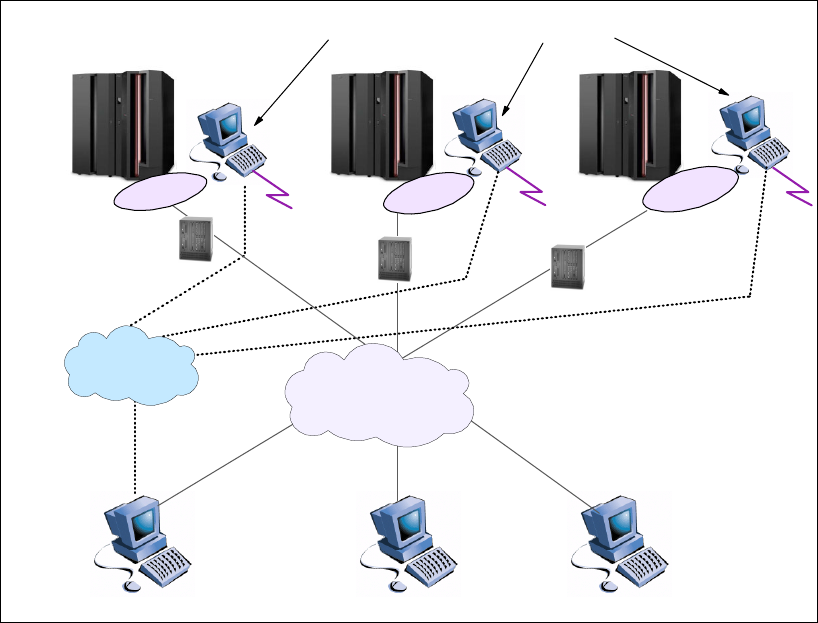
Appendix A. Hardware Management Console (HMC) 245
Choosing the best option involves understanding your remote control needs and use
patterns. Figure A-10 shows an example configuration for each option.
IBM uses remote control program product facilities to assist in problem determination, and to
provide operational assistance as required. IBM also uses the SDLC or TCP/IP asynchronous
connection facilities to transmit service data to and from the IBM Service Support System, to
gather error data, and to receive fixes. A remote operation configuration is shown in
Figure A-10.
Figure A-10 Remote operation configuration
Support Element
The zSeries 990 is supplied with a pair of integrated ThinkPad Support Elements (SE). One is
always active, while the other is strictly an alternate. Power for the support elements is
supplied by the processor frame, and there are no additional power requirements.
Each SE comes with two communication adapters included. There are two configuration
options: a Dual Ethernet SE or a Token ring/Ethernet SE. Neither is the default; you must
select one or the other. Regardless of which pair of adapters you choose, both SEs will be
configured the same.
If you order the Token ring/Ethernet default combination, a Multistation Access Unit (MAU) is
required to operate the token ring LAN. The MAU is installed in the A frame and requires no
power.
Primary
Operations
Monitor
Browser
Hardware
Management
Console
Remote Control
Program Product
or Browser
Bridge
Bridge
to IBM
to IBM
to IBM
Data
Center 1
Data
Center 2
Data
Center 3
Hardware Management Console
Bridge
Corporate
Network
Backup
Operations
Switched
Network
Get IBM eServer zSeries 990 Technical Guide now with the O’Reilly learning platform.
O’Reilly members experience books, live events, courses curated by job role, and more from O’Reilly and nearly 200 top publishers.

